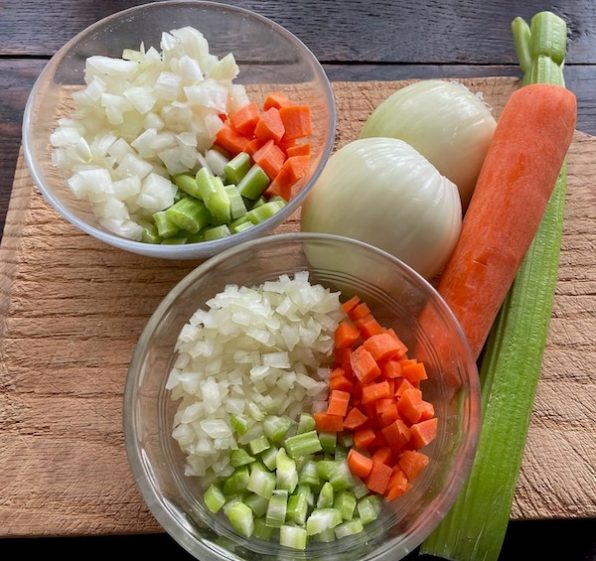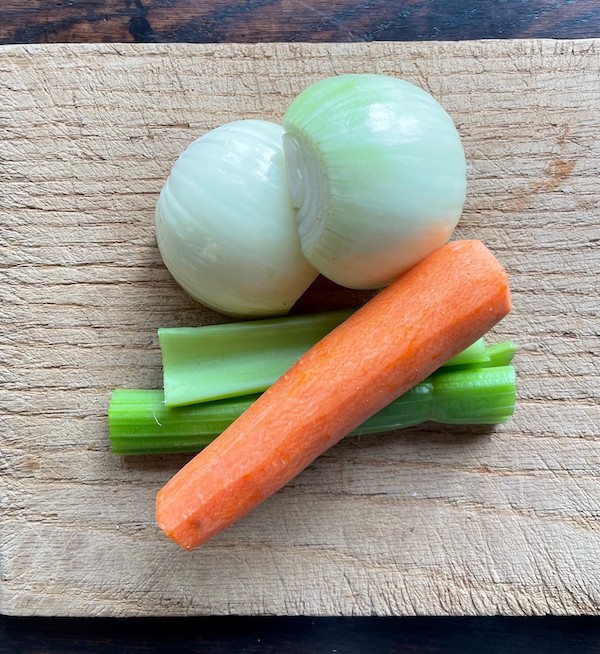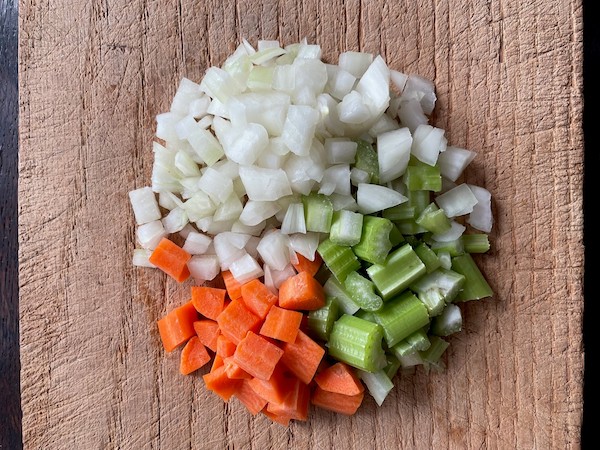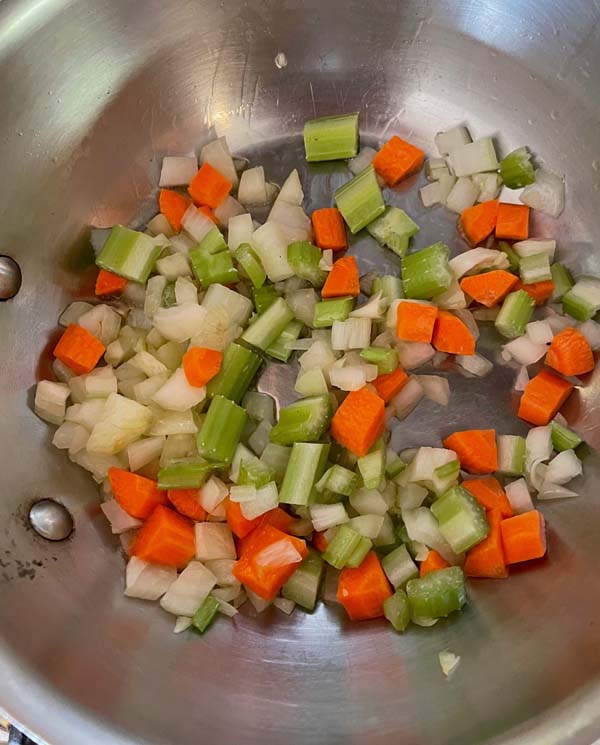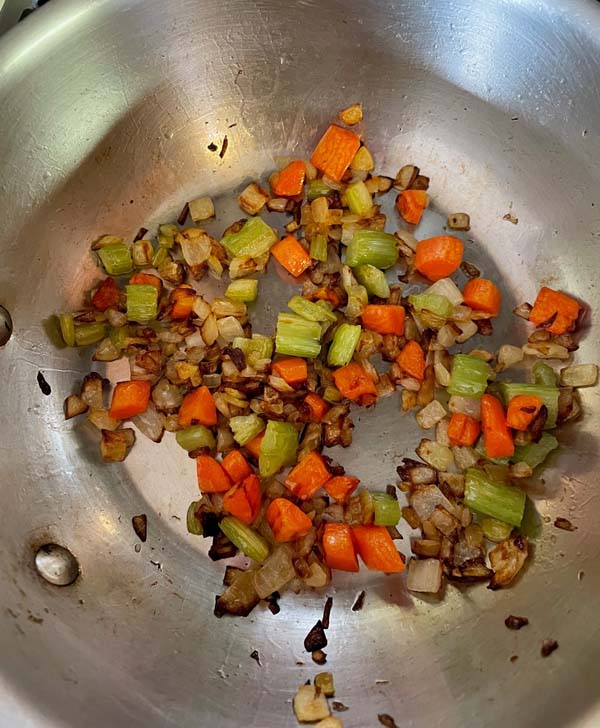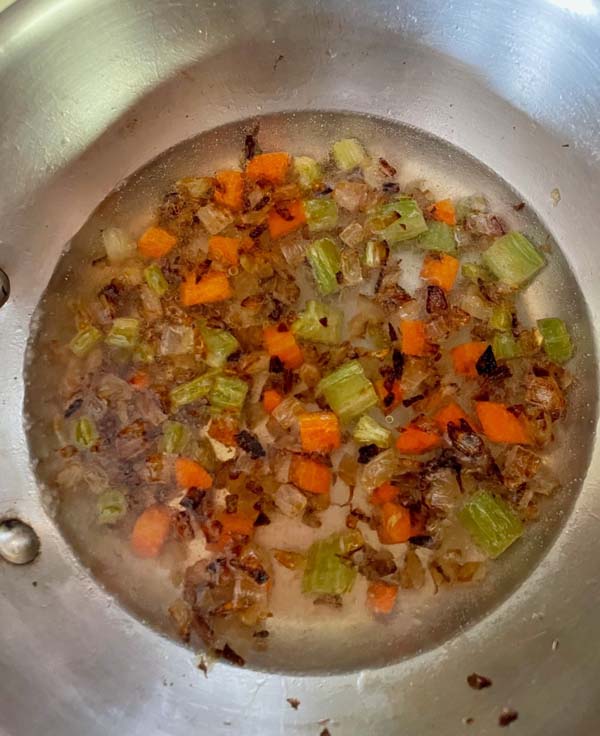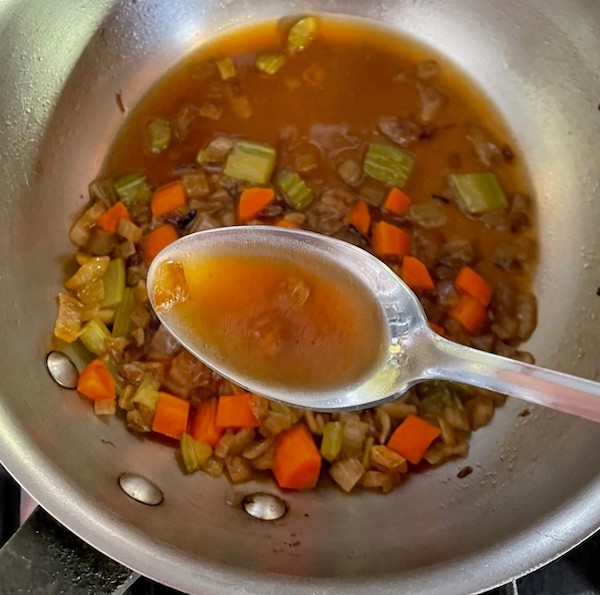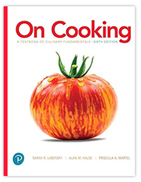Much of what we cook during the short cold days of winter start with mirepoix – a mastermind of flavor. It’s the base mixture of carrots, celery and onions used to make soups and stews. Knowing how to make it and cook it will exponentially improve your cooking. It’s simple and versatile too.
Mirepoix consists of diced carrot, celery and onion. It is sautéed briefly or left to caramelize before liquid is added. Cook it gently and the delicate flavor of the vegetables will perfume your dish. Cook the vegetables until they darken, and your dish will develop nuanced flavor and rich color.
The Ratio
The ratio of onions, carrots and celery in a classic mirepoix is 2:1:1. Two parts by weight diced onion, 1 part diced carrot and 1 part diced celery. Change the ratio and you alter the flavor. Watch out for too much carrot because it will sweeten your dish.
Some versions of mirepoix replace the onions with leeks. Matignon is another version that starts by rendering bacon.
Fine Points of Using Mirepoix
Peel, cut and chop these vegetables any way you like. If you are in a hurry, chop them roughly in a food processor. But bear a few things in mind.
If the mirepoix will be visible in the finished soup or stew, take some care and cut uniform pieces. Other ingredients such as green beans or zucchini can be chopped roughly to create visual texture in your dish.
The smaller the size of the diced vegetables in your mirepoix, the more flavor will be released into the cooking liquid. (More exposed cut sides will be in contact with the liquid.) Finer dice means the flavor will be released more quickly too. So remember to cut the vegetables into smaller pieces when the mirepoix will cook a shorter time such as when making something to flavor fish or shellfish.
Huge chunky mirepoix works well in long simmered stocks.
When using mirepoix, first you soften the vegetables in clarified butter or oil.
Then you cook the vegetables until they are softened and somewhat translucent. Here I am testing the tenderness of the celery using a paring knife. I usually just pop a piece in my mouth.
You can now add the other ingredients in your recipe and liquid. Your lightly cooked vegetables will flavor your soup or stew.
The deeper the color of the vegetables after cooking, the richer the flavor and the darker the color the cooking liquid will become.
This makes a great deal of difference when you need to coax the most flavor out of the veggies for a plant-based stock. When you crave a deep brown stock maybe even one using chicken bones instead of beef or veal bones, brown that mirepoix gently for as long as it takes. I cooked the one pictured here for 10 minutes, stirring often.
Here is the caramelized mirepoix when the water is added.
And here it is after simmering for 10 minutes. It tastes rich and flavorful plus it has an amber color.

